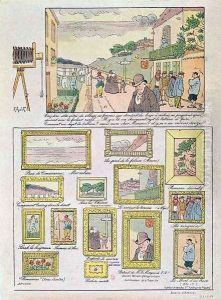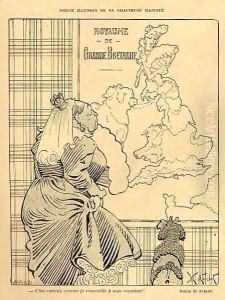Henri Avelot Paintings
Henri Avelot was a French artist and illustrator, born in 1863 and passing away in 1935. His work spanned the late 19th and early 20th centuries, a period marked by significant changes in art and society. Avelot's artistic contributions, while perhaps not as widely recognized as those of his contemporaries, nevertheless reflect the vibrant cultural milieu of his time.
Henri Avelot's career was notably diverse, encompassing a range of artistic mediums and subjects. He was particularly known for his illustrations, which appeared in various publications, including books, magazines, and journals. These illustrations often captured the essence of daily life in France, as well as the country's landscapes and cityscapes, with a keen eye for detail and a characteristic charm that endeared him to his audience.
Avelot's style was influenced by the broader movements of his era, including Impressionism and Post-Impressionism, though he maintained a distinct approach that set his work apart. His illustrations and artworks frequently displayed a delicate use of line and color, demonstrating his adeptness at both capturing reality and imbuing it with a sense of whimsy and lightness.
Despite the quality and appeal of his work, Henri Avelot did not achieve the level of fame and recognition that some of his peers attained. Nevertheless, his contributions to the arts, particularly in the realm of illustration, remain noteworthy. His illustrations continue to be appreciated for their historical value and artistic merit, offering insights into the culture and aesthetics of France during a pivotal period in its history.
Today, Henri Avelot's work is preserved in various collections and museums, where it serves as a testament to his skill and creativity. His legacy, though perhaps modest in comparison to the giants of his time, is a valuable part of the tapestry of French art history, representing the richness and diversity of artistic expression in the late 19th and early 20th centuries.

